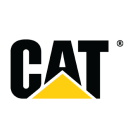
When given two completely identical — and fake — resumes a few years back, various STEM professors across the country called “Jennifer’s” qualifications into question over “John’s.” Not only that, academics in the study, which was orchestrated by Social Psychologist Corinne Moss-Racusin, wanted to offer the fictitious male candidate an average of $4,000 more a year based on his name alone.
While progress has been made in gender equality in the workforce since 2014, tech still has a long way to go. Take, for example, the fact that around 42 percent of women say they face discrimination at work, and men are still 30 percent more likely to obtain managerial roles.
Chicago companies Elevate K-12 and Caterpillar are looking to address such disparities head on. They’re doing so both internally and externally, through mentorship initiatives, employee resource group programs and hiring practices.
Caterpillar’s Darilynn Criss said that the IoT company’s leadership program helped her find the confidence to apply for — and get — a position she was hesitant to throw her hat in the ring for based on qualifications alone. As a local chapter chairperson for Women’s Initiative Network, she sees the importance of structured action even more clearly. Below, she and Elevate K-12’s Director of Instruction Carolyn Lanctot walk Built In Chicago through the ways in which their employers are doing the ongoing work of making local tech and beyond more equitable.
When it comes to hiring, Elevate K-12’s goal is a simple one: to attract and retain top talent. But at the social impact education company, that requires turning an antiquated model on its head and putting more women in positions of power. Director of Instruction Carolyn Lanctot said that mentorship has been a key part of that equation. This winter, the company launched its first Mentor Instructor Program, a peer-based support initiative that is currently made up of 90 percent women.
What steps has your company taken to identify areas of improvement when it comes to gender equity in the workplace, and what are they?
At Elevate K-12, gender equity is woven into the fabric of the company. We start with a strong foundation in our leadership and are committed to our mission of building a dynamic team. We have a diverse, global leadership team with a female CEO. At Elevate, 100 percent of the operations leadership team and 70 percent of the U.S.-based staff are women. From the C-suite to our front-line teachers, we take pride in creating opportunities for women to thrive and grow with the company.
From the C-suite to our front-line teachers, we take pride in creating opportunities for women to thrive and grow with the company.”
What actions is your company taking to overcome gender inequity in the workplace?
In U.S. K-12 public schools, women account for over 70 percent of all teaching positions, but only 30 percent of all educational leadership roles. At Elevate K-12 we are focused on shifting this narrative, with a C-suite being majority women and women leading most business units at the director level and above. We have an embedded focus on creating a mission-oriented culture, valuing true work-life balance and encouraging mentorship across the organization. We feel this focus creates an environment where everyone, especially women, can succeed and feel empowered.
Our mission leads with empathy. When that focus on empathy leads to students receiving a high-quality education, no matter their circumstances, empathy can no longer be considered a stereotypically feminine soft skill. The mission draws people with persistence, creativity and grit to create much-needed change in the traditional school system.
In terms of work-life balance, our academic leaders have flexible hours for supporting students and instructors virtually all from their own home. Since its founding, many of our academic leaders work from home and are still able to take care of their children and loved ones. This past school year required adaptable and innovative leaders who could manage their own children’s remote learning while also supporting hundreds of students in our Elevate K-12 virtual classrooms. Our instructors and coaches have been able to do both successfully because we value that work-life balance at all levels of our organization.
How do you ensure your actions include and create equity for ALL women?
As Kamala Harris said in her first speech as Vice President-Elect, “While I may be the first woman in this office, I won’t be the last. Every little girl watching tonight sees that this is a country of possibilities.”
At Elevate K-12, we are impacting young girls in underserved communities whose key to access and equity is education. By providing eighth-graders in rural Georgia accelerated algebra and geometry, we hope to ignite a spark in young girls who will be the change we need to see in the world. We’re showing them that we need to hear all voices and they are all valued at the table.
At Caterpillar, employees participate in reverse mentoring –– a program that gives junior women the chance to mentor senior male leaders, providing experience-based perspective the men otherwise wouldn’t get. That’s just one initiative that Senior Digital Consultant Darilynn Criss attributes to the software company’s growth when it comes to establishing gender equality in the workplace.
What steps has your company taken to identify areas of improvement when it comes to gender equity in the workplace?
At Caterpillar, we live our values every day. We create a positive employee experience by treating each other with respect, trust and dignity. Ultimately, innovation is born when people with different opinions, experiences and backgrounds come together to serve our global customers and communities.
Each year, Caterpillar participates in the McKinsey Women in the Workplace study. Caterpillar tackles the findings within existing initiatives and our 14 employee resource groups (ERGs), one of which is the Women’s Initiative Network (WIN).
As a member of Caterpillar’s WIN, I’ve had the opportunity to participate in several small-group discussions about the 2020 report. We discussed what we are seeing at Caterpillar, what’s working and where opportunities exist. ERGs like WIN help drive inclusion throughout the enterprise. They partner with the business, unlocking the power of diverse thinking to influence decisions.
Another program focuses on sponsorship from the top, pipeline building in the middle, and cultural change from the ground up.”
What actions is your company taking to overcome gender inequity in the workplace?
We have a number of initiatives underway, but one that is particularly near and dear to my heart is a leadership program that helps everyone develop inclusive leadership strategies and sharpen awareness of gender biases. It helped me find the confidence to both apply for (and get) a position when I didn’t check all the qualification boxes and step into a WIN local chapter chairperson role. I helped refresh the program for 2021, using on-demand learning to make it accessible to everyone.
Another program focuses on sponsorship from the top, pipeline building in the middle, and cultural change from the ground up. Each business group within Caterpillar is trying different things to see what works for them — everything from reentry programs for those who take a break from the workplace to reverse mentoring.
How do you ensure your actions include and create equity for ALL women?
Caterpillar’s ERGs play a role here. Last year, several ERGs teamed up to bring their members a virtual leadership series, helping progress continue despite the pandemic. Caterpillar’s Lambda employee resource group supports and advocates for the LGBTIQA community and has designed “Safe Space” sessions highlighting different perspectives and tools to assist our employees in becoming effective allies. In 2020, Caterpillar joined OneTen, a coalition of employers committed to creating 1 million jobs for Black Americans over 10 years. Caterpillar African American Network and Young Professionals formed a partnership to actively support OneTen.
Through partnerships with groups like the Society of Women Engineers, Society of Hispanic Professional Engineers, National Society of Black Engineers and Historically Black Colleges and Universities, Caterpillar is building a more diverse talent pipeline.
Caterpillar is committed to continued progress in this space as inclusion lifts all boats. These are exciting times to be a woman at Caterpillar.











